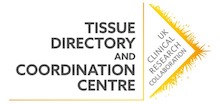Capturing value through Researchfish
It is important to understand the value of human sample resources' contribution to health research, to ensure continued investment. Most sample resources report metrics to their funders to show evidence of their value to research. These metrics largely relate to the use of samples, rather than the research they have enabled. This information is not always widely accessible as it is often not shared beyond the reporting to the funding body. We looked at the feasibility of using Researchfish to capture the value of human sample collections and their research impact.
Researchfish is an online platform used by funders and universities to track research and evidence impact. Over 150 funders use the reporting platform to track research outputs on an annual basis from the projects they fund. Researchers can report the ‘Facilities and Resources’ they used in their research, including the use of human sample resources to access tissue.
Championing transparent research
A priority for the UKCRC Tissue Directory and Coordination Centre (TDCC) is to promote transparency throughout the research process, for example through our Transparency Principles. The Health Research Authority and patient advocate groups such as use MY data are also driving for more transparency in the way samples are used. We identified Researchfish as an existing information source to capture the value of human sample collections. It already offers this opportunity via a question specifically gathering information about use of ‘Facilities and Resources’. So, collating responses to this question across funding bodies could make collections and their impact more visible.

Scoping support
We spoke to stakeholders, such as health research funders, who use and manage Researchfish. We gathered insight on the feasibility of gathering information via the ‘Use of Facilities and Resources’ question.
Most stakeholders were supportive of using an existing reporting system to better understand the contribution that human sample resources make to health research. It would be useful to compare the resources created and the research enabled across different regions and funders. A central portal could bring together the information for the comparison to work. It was suggested that the UKCRC Tissue Directory could be the host for this portal, with the information openly available.
Despite support in theory, the practicalities of using ResearchFish for this activity were more complex. Researchfish does not have 100% completion rate from researchers. The ‘Facilities and Resources’ question has a varied response rate with many funders struggling to obtain meaningful data. For example, UKRI do not publish data from this question on their public Gateway to Research. We produced a guide for biobanks to share with researchers completing Researchfish in the 2020 submission to improve reporting.
Lessoned learnt
We discovered that there was little interest in using Researchfish to capture the value of sample collections (i.e. research input) because its primary purpose is to capture research outputs. Therefore decision-making boards would be unlikely to support making the 'Facilities and Resources' question compulsory.
Even if we did successfully champion for the ‘Facilities and Resources’ question to become mandatory, there is still an issue around access to this information. Using the UKCRC Tissue Directory as a portal to record information about use of human sample resources presents two key hurdles. The first of these is data ownership and sharing. We would need consent from all relevant health research funders to access their information on Researchfish. While there may be options to do this via their agreements with Researchfish, this is likely to be time consuming and complex. The second hurdle is related to the technical ability for information from Researchfish to be automatically sent to another platform or portal. Once again, while possible, this is likely to be an expensive and time consuming endeavour.
Therefore, despite the potential of gathering information via Researchfish, we at the UKCRC TDCC have decided not to push for any change at this time. Support from key stakeholders is needed to successfully take this idea forward.

Promoting the value of human sample resources – the next steps?
We are pursuing ways to support the biobanking community in evidencing value. For example, we are exploring how to improve acknowledgement of human sample resources in academic publications. We have developed a publication search tool that is embedded in the UKCRC Tissue Directory. The tool is currently going through testing and will be available soon.
Another avenue to explore is making use of any existing unique identifier codes used in the research process. Funder project codes, REC references, ORCHiD codes, and Digital Object Identifiers may offer some tracing opportunities. For example, sample access applications could include identifying these codes so that biobanks could later look up relevant publications. The feasibility of such a system is something we at the UKCRC TDCC or another organisation could explore in the future.
Your views
Human sample resources can access our guide to encourage researchers to report use of your tissue samples here. This is also available for researchers reporting use of human samples in the next Researchfish submission period.
Please let us know if you think the UKCRC TDCC should be prioritising its efforts to evidence the value of sample resources. Other suggestions for future priorities are also welcomed. We are keen to carry on this conversation so please get in contact with any comments or questions.
